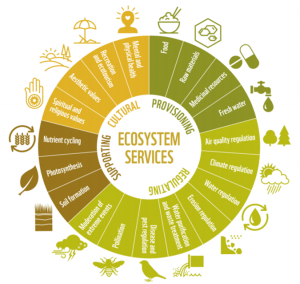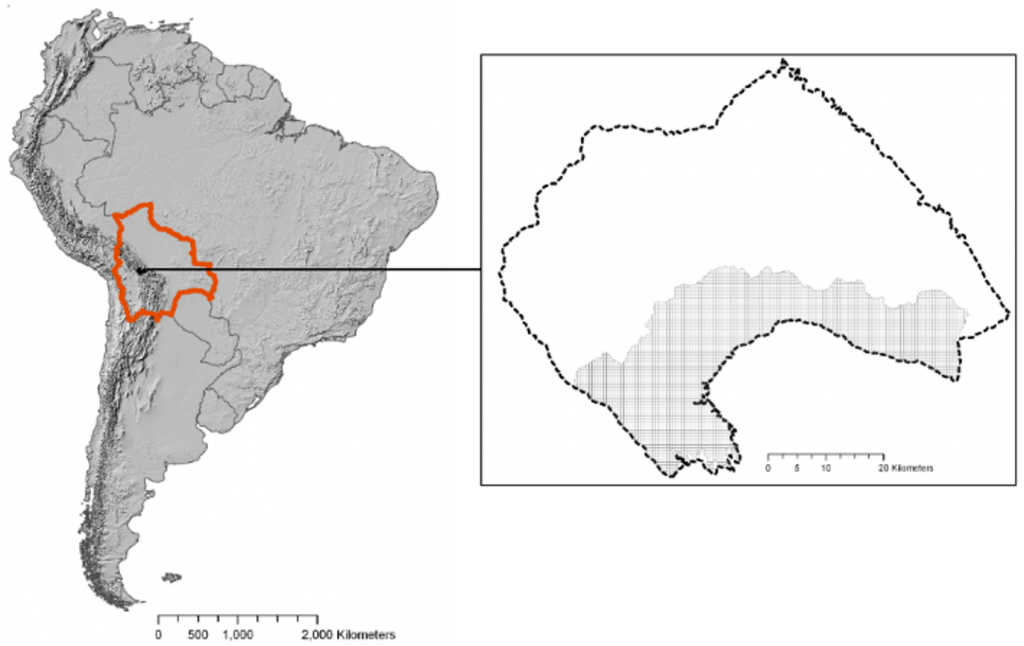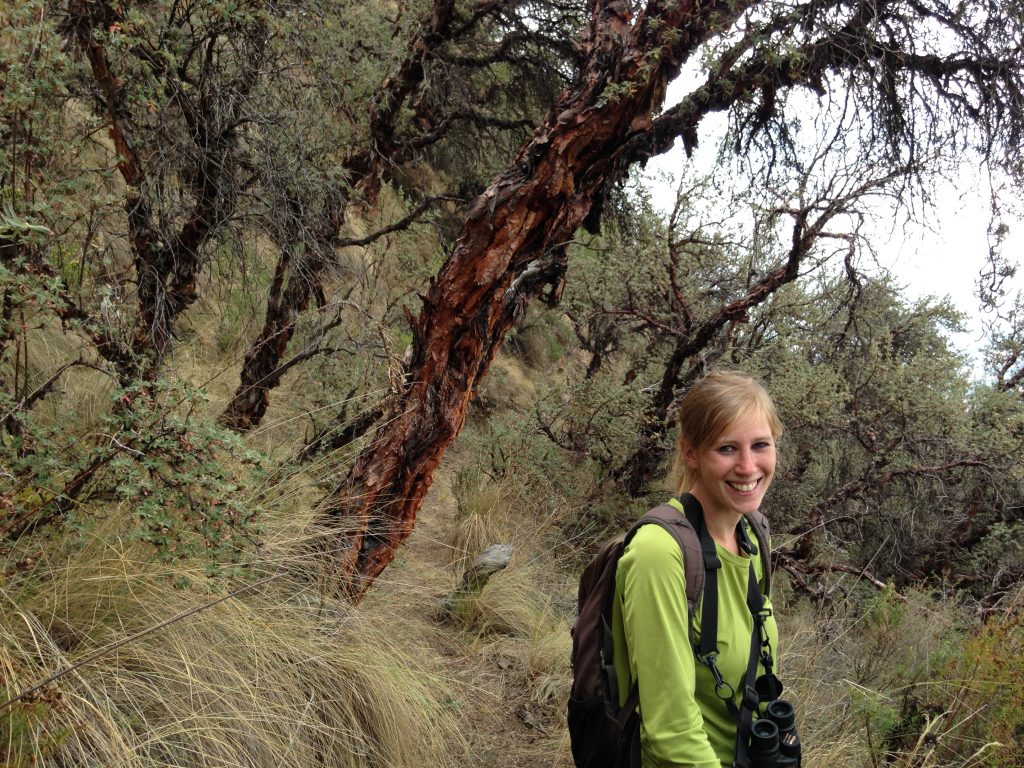Protected areas are important tools to conserve biodiversity. As they are often located in populated areas, protected areas are increasingly expected to also provide ‘ecosystem services’. Ecosystem services are the many benefits given by nature to humans. Most of these services, like the provision of food, clean air and water, resources like wood or medicine are crucial in supporting local livelihoods but can only be provided by healthy ecosystems.

Source: WWF, 2016 (adapted from Millennium Ecosystem Assessment, 2005)
Unfortunately, conserving both biodiversity and ecosystem services in natural areas can require different management practices and may even conflict with each other. To implement management strategies in natural areas that protect biodiversity and ecosystem services, it is important to identify the potential synergies and trade-offs between them. With colleagues from the University of Antwerp, Ghent University and Queensland University in Australia, I published a study in the multidisciplinary science journal Scientific Reports in which we investigate these trade-offs in an inhabited region of the Tunari National Park in Bolivia. Despite its official protected status, the area currently lacks an effective management strategy to protect its rare high-altitude Polylepis forests.

Polylepis forests only grow at high elevations in the Andes throughout South America, higher than any other forest in the world. Unfortunately, in the Tunari National Park like everywhere they occur, Polylepis forests are threatened by deforestation. It is important to protect these forests however, not only because they are home to an array of unique species, but also because they provide many ecosystem services. These ecosystem services such as stabilizing and fertilizing soils, purifying and storing clean water and providing firewood are particularly valuable for the communities that have inhabited the area for centuries. As in the Tunari National Park water resources are scarce and soils are poor, these services are particularly important to locals who rely on farming activities to survive.
In our study, we investigated biodiversity conservation and ecosystem services provision in the most densely populated area of the Tunari National Park, an area called the Southern Slope. We focused on birds as indicators of biodiversity and on four ecosystem services that are important for the well-being of local communities inhabiting the area as they may influence agricultural capacity: water availability, water pollution, water runoff and soil erosion.

Our results indicate that conserving the biodiversity associated with Polylepis forests on the Southern Slope would require the strict protection of about 15% of the area, leaving the rest of it available to local communities for agricultural, pastoral and forestry activities. Our simulations show that protecting more biodiversity would result in fewer water shortages, less water pollution and less runoff on the Southern Slope, which would ultimately benefit both local communities and the people living outside the park. Nevertheless, the conversion of some previously unexploited areas to agricultural land would result in increased level of erosion, probably resulting in decreased agricultural capacity on the long-term.

Identifying the trade-off allowed us to make informed recommendations to better conciliate biodiversity, ecosystem services delivery and local livelihoods in the Tunari National Park. More specifically, we suggest that agroforestry activities (the practice of planting native trees inside fields and pastures) could be carried out in erosion-prone areas, such as steep slopes, in addition to protecting and even restoring more Polylepis forests to ensure ecosystem services delivery.
Original article published as: Fastré, C., Possingham, H. P., Strubbe, D. and Matthysen, E. (2020). Identifying trade-offs between biodiversity conservation and ecosystem services delivery for land-use decisions. Scientific Reports, 10(1), 1-12.
Eager to know more about the Tunari National Park? Don’t miss our post taking you in the heart of the park and its Polylepis forests:


